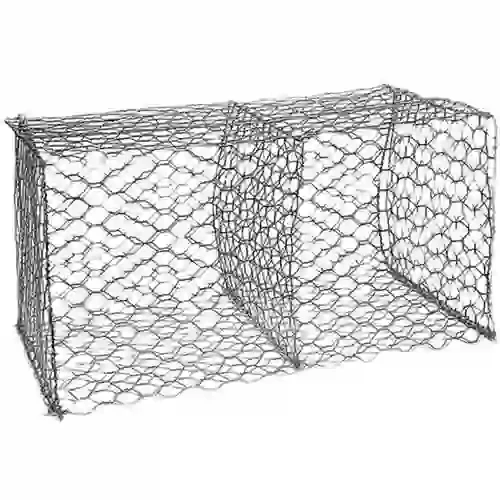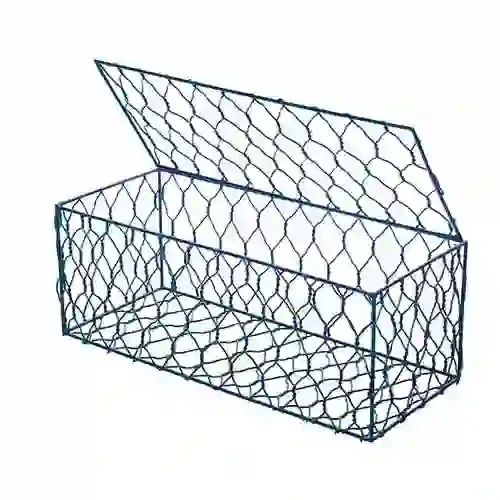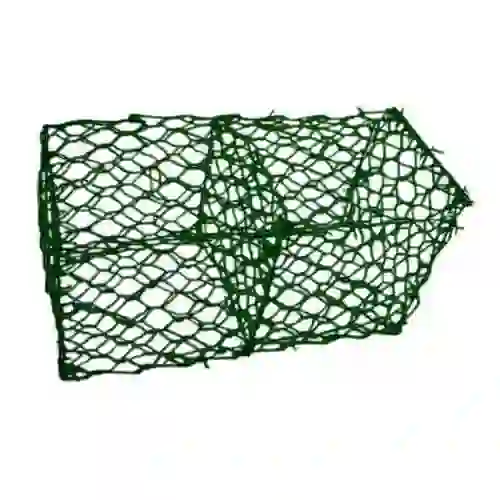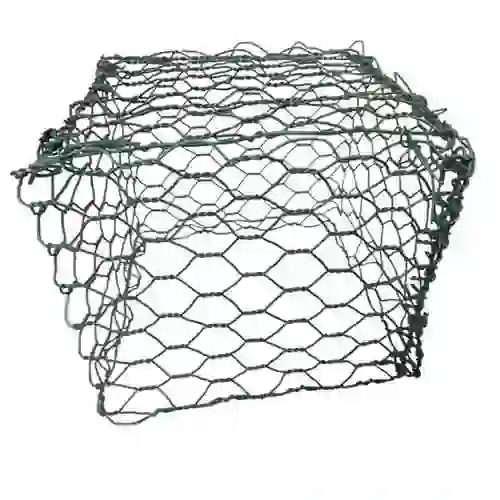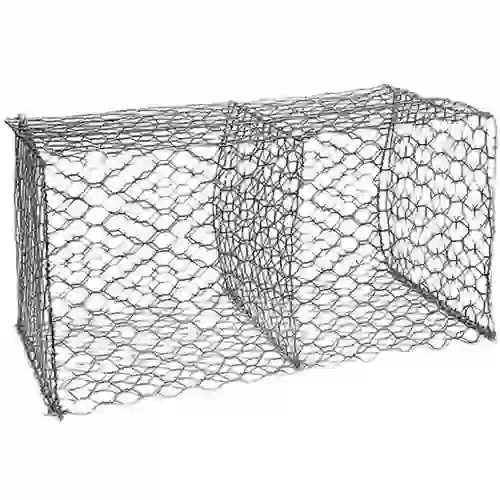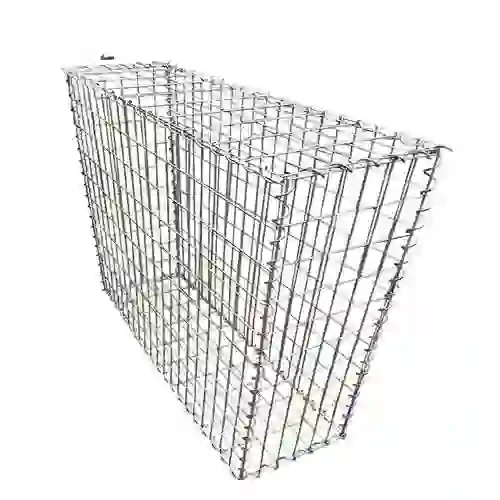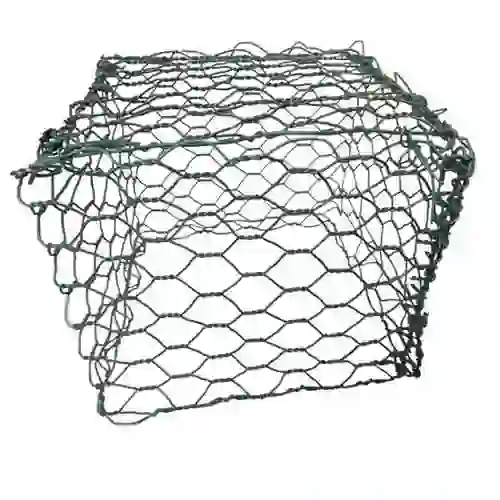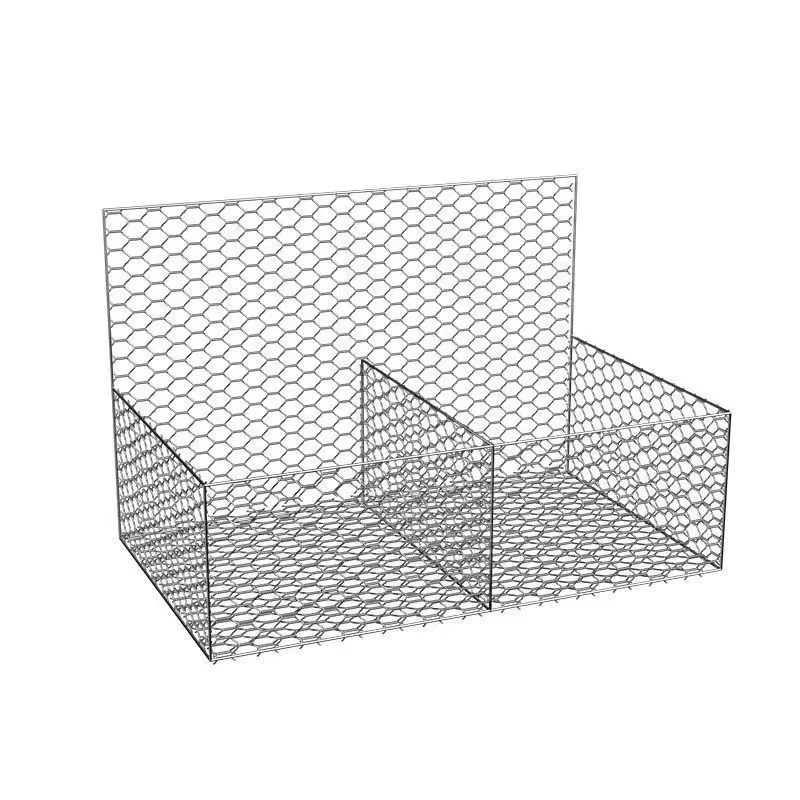-
 Phone:
Phone: -
 Email:
Email:

Reinforced Mesh Cushion: Durable, Breathable Comfort & Support
The Crucial Role of Reinforced Mesh Cushion in Industrial Applications
In demanding industrial environments, managing vibration, absorbing shock, and ensuring thermal insulation are paramount for operational efficiency and equipment longevity. The emergence of the Reinforced Mesh Cushion represents a significant leap forward in addressing these critical challenges. Unlike conventional damping materials, these advanced cushions are engineered from high-grade metallic wires, typically stainless steel or nickel-based alloys, intricately woven and often sintered to create a resilient, porous structure. This unique construction provides exceptional performance across a broad spectrum of temperatures and pressures, making them indispensable in sectors where reliability cannot be compromised. The design allows for controlled deformation under load, effectively dissipating energy and preventing the transfer of damaging vibrations to sensitive machinery or structural components. Furthermore, their inherent resistance to corrosion and extreme temperatures positions them as a superior choice over organic alternatives that degrade under harsh conditions. The trend within heavy industry is increasingly shifting towards durable, high-performance solutions that contribute to reduced maintenance costs and extended operational lifespans, precisely what this technology delivers.
Global industrial growth, particularly in sectors like petrochemicals, power generation, and specialized manufacturing, continues to drive demand for robust vibration and shock absorption solutions. The market for sophisticated dampening materials is experiencing consistent expansion, propelled by stringent safety regulations, the need for enhanced equipment reliability, and the push for greater energy efficiency. Innovations in material science and advanced manufacturing techniques, such as precision weaving and sintering processes, are continually refining the capabilities of Reinforced Mesh Cushion technology. These advancements lead to improved load-bearing capacity, enhanced damping coefficients, and greater resilience to aggressive chemical environments. As industries strive for higher uptime and lower total cost of ownership, the adoption of specialized solutions like the reinforced mesh cushion becomes not just an advantage, but a necessity, ensuring that critical infrastructure remains stable and operational under the most challenging conditions imaginable. This strategic shift underscores a broader commitment to long-term asset protection and operational integrity.
Precision Engineering: The Manufacturing Process of a Reinforced Mesh Cushion
The manufacturing of a high-quality Reinforced Mesh Cushion is a sophisticated process that leverages advanced metallurgical and weaving techniques, ensuring precise structural integrity and optimal performance. It begins with the meticulous selection of raw materials, primarily high-strength metallic wires such as Stainless Steel grades (e.g., AISI 304, 316, 316L for corrosion resistance and elevated temperatures) or exotic alloys like Inconel and Monel for extreme chemical and thermal environments. These materials are chosen based on the specific application's required temperature resistance, corrosion immunity, and mechanical strength. Following material selection, the wires undergo a precision knitting or weaving process, forming a complex interlocked mesh structure. Unlike casting or forging, this process creates a flexible yet robust material with controlled porosity, essential for its damping and filtration properties. Multiple layers of this mesh are then stacked and often compressed to achieve the desired density and thickness. For enhanced structural integrity and long-term stability, some advanced cushions undergo a sintering process, where the stacked mesh layers are subjected to high temperatures just below their melting point in a controlled atmosphere. This process permanently bonds the contact points of the wires, forming a monolithic, highly resilient structure without fully melting the material. This significantly increases the cushion's compressive strength, resistance to creep, and overall durability, particularly under dynamic loads.
Illustrative Diagram: Key Stages in Reinforced Mesh Cushion Production
Quality control is integrated throughout every stage of production to ensure the Reinforced Mesh Cushion meets rigorous industry standards. Initial material verification ensures compliance with ASTM (American Society for Testing and Materials) or EN (European Norms) specifications for chemical composition and mechanical properties. Post-weaving, dimensional checks ensure uniformity and adherence to specified tolerances. After compression and sintering, if applicable, the cushions undergo a series of comprehensive tests including load-deflection testing to verify compressive strength and elastic recovery, permeability testing to confirm desired porosity, and often vibration damping coefficient analysis using specialized equipment. Non-destructive testing methods like visual inspection and sometimes radiography are also employed to detect any internal structural flaws. Products typically adhere to international quality management standards such as ISO 9001:2015, ensuring consistent product quality and traceability. This rigorous testing regime, combined with advanced manufacturing techniques, contributes to an extended service life, often exceeding 10-15 years in typical applications, outperforming conventional elastomers by a significant margin. These cushions are critical in industries like petrochemicals (for pipeline supports, heat exchangers), metallurgy (for high-temperature furnace lining protection), and water treatment (for pipe vibration isolation), where their superior performance translates into significant energy savings and enhanced corrosion resistance, contributing to safer and more efficient operations.
Technical Specifications and Performance Metrics
The performance of a Reinforced Mesh Cushion is defined by a range of critical technical parameters that dictate its suitability for specific industrial applications. Understanding these specifications is essential for engineers and procurement specialists to select the optimal solution. Key parameters include material composition, which determines temperature and corrosion resistance; density and porosity, which directly influence damping characteristics and load-bearing capacity; and dimensional stability under various thermal and mechanical stresses. For instance, cushions designed for high-temperature furnace environments will require materials like Inconel 600 with excellent oxidation resistance and high creep strength, while those for chemical processing may prioritize materials such as Hastelloy for exceptional resistance to aggressive acids. The effective operating temperature range often spans from cryogenic conditions (-196°C) up to extreme high temperatures (over 800°C), far exceeding the capabilities of rubber or polymer-based solutions. Similarly, their ability to withstand significant compressive loads, often measured in hundreds of kN/m², without permanent deformation, highlights their structural robustness. The vibration absorption coefficient, typically ranging from 0.6 to 0.9, indicates their efficiency in dampening mechanical oscillations, crucial for protecting sensitive equipment from fatigue and failure. This detailed specification breakdown allows for precise application matching, ensuring maximum operational efficiency and equipment protection.
| Parameter | Range/Value | Unit | Notes |
|---|---|---|---|
| Material Options | SS304, SS316, SS316L, Inconel, Monel, Hastelloy | - | Selected based on corrosion & temp. resistance |
| Operating Temperature Range | -200 to +800 | °C | Material dependent, higher for specialized alloys |
| Density (Compressed) | 200 - 800 | kg/m³ | Influences damping & load capacity |
| Compressive Strength | 0.5 - 2.5 | MPa | Load required for specific deformation |
| Vibration Absorption Coefficient | 0.6 - 0.9 | - | Damping efficiency, higher is better |
| Porosity | 70 - 95 | % | Void space within the cushion structure |
| Service Life (Typical) | 10 - 15+ | Years | Under typical operating conditions |
The selection of the appropriate Reinforced Mesh Cushion also depends heavily on the specific application's load profile – whether it involves static compression, dynamic vibration, or shock impact. Our technical team works closely with clients to analyze their operational parameters, including peak loads, frequency ranges of vibration, and environmental corrosivity, to recommend a tailored solution. This bespoke approach ensures that the chosen cushion not only meets but exceeds performance expectations, contributing significantly to the stability and extended operational life of industrial assets. Our products are rigorously tested to global standards, including ASTM E8 for tensile strength and ASTM D3574 for compression deflection, validating their mechanical integrity and consistent performance under specified conditions. This commitment to data-driven selection and validated performance underscores the reliability and superior engineering of our reinforced mesh cushion offerings, building strong trust with our B2B partners across various heavy industries.
Versatile Applications and Tangible Benefits
The robust design and superior material properties of the Reinforced Mesh Cushion make it an exceptionally versatile component across a myriad of industrial applications. In the petrochemical industry, these cushions are frequently deployed as pipe supports, providing crucial thermal expansion management and vibration isolation for high-temperature, high-pressure pipelines. They prevent pipe "walking" and reduce stress on structural elements, thereby mitigating the risk of fatigue failures and costly leaks. For instance, in a large refinery, implementing these cushions on critical crude oil transfer lines led to a documented reduction in vibration levels by approximately 45%, significantly extending the lifespan of adjacent equipment and reducing routine maintenance intervals. Similarly, within the power generation sector, particularly in nuclear and thermal power plants, reinforced mesh cushions serve as critical components in boiler support structures and turbine foundations. They absorb significant operational vibrations and thermal expansion, which are inherent in these high-energy environments, ensuring the structural integrity and stable operation of vital power-producing machinery. This directly translates to enhanced plant safety and increased uptime.
Beyond heavy industries, the application of Reinforced Mesh Cushion extends to metallurgy, where they protect sensitive weighing equipment and conveyer systems from the shock of heavy loads and high temperatures encountered in steel mills and foundries. Their ability to withstand extreme thermal cycling and resist molten splash makes them indispensable. In the marine industry, they are used for engine mounts and exhaust system supports, effectively dampening vibrations that would otherwise be transmitted through the ship's hull, enhancing comfort for crew and passengers, and reducing wear on onboard systems. For general industrial machinery, from large presses to specialized manufacturing equipment, these cushions act as isolators, reducing noise, minimizing wear on bearings and gears, and improving the precision of operations. The core technical advantages include unparalleled vibration damping, excellent shock absorption, high temperature and corrosion resistance, and a significantly longer service life compared to traditional rubber or spring isolators. These attributes contribute directly to lower operational costs, reduced downtime, enhanced safety, and improved environmental performance, showcasing the strategic value of integrating reinforced mesh cushions into critical infrastructure.
Customization and Partnership Approach
Recognizing that no two industrial applications are exactly alike, we specialize in providing highly customized Reinforced Mesh Cushion solutions tailored to the unique demands of each client. Our customization capabilities span material composition, allowing selection from a wide array of stainless steels, nickel-based alloys, and other specialized metals to perfectly match the operational temperature, corrosive environment, and mechanical load requirements. Furthermore, we offer extensive flexibility in cushion geometry, including various shapes (round, rectangular, custom profiles), dimensions (thickness, diameter, length), and density configurations. This allows us to fine-tune the stiffness and damping characteristics to achieve precise vibration isolation and load support. For instance, a client requiring specific anti-creep performance under sustained high loads might benefit from a sintered cushion with a higher specific density, while another needing optimal shock absorption for intermittent impacts might require a cushion with lower density and greater elasticity. Our engineering team, leveraging over two decades of experience in wire mesh technology, collaborates closely with clients from conceptual design through to deployment, providing expert consultation and performance modeling to ensure the final product delivers optimal results.
Our commitment extends beyond product delivery to fostering long-term partnerships. We offer comprehensive customer support, including technical assistance for installation, guidance on maintenance best practices, and post-sales troubleshooting. Our typical lead time for standard products is 2-4 weeks, while custom orders may range from 4-8 weeks, depending on complexity and material availability, all communicated transparently. We stand behind the quality of our Reinforced Mesh Cushion products with a robust warranty, typically covering manufacturing defects and material integrity for a period of 1 to 5 years, subject to application conditions. This commitment to quality is reinforced by our ISO 9001:2015 certification, ensuring that all aspects of our design, manufacturing, and quality control processes meet international standards of excellence. Our focus on bespoke solutions, combined with dedicated support and rigorous quality assurance, positions us as a trusted partner for industries seeking reliable, high-performance vibration and shock management solutions that contribute to overall operational resilience and efficiency.
Frequently Asked Questions (FAQ)
Q1: What industries primarily benefit from Reinforced Mesh Cushion?
A1: Industries that operate in high-temperature, corrosive, or high-vibration environments benefit immensely. This includes petrochemical, oil & gas, power generation (nuclear, thermal), metallurgy, marine, and general heavy manufacturing sectors. They are crucial for pipe supports, heavy machinery mounts, and exhaust systems.
Q2: How does a Reinforced Mesh Cushion compare to traditional rubber mounts?
A2: Unlike rubber mounts, which degrade under high temperatures, chemical exposure, and UV radiation, reinforced mesh cushions offer superior performance across extreme temperature ranges (-200°C to +800°C), exceptional corrosion resistance due to metallic construction, and longer service life. They also exhibit stable performance under dynamic loads and provide consistent vibration damping over time, without creep or hardening.
Q3: Can these cushions be customized for specific load requirements?
A3: Absolutely. Our reinforced mesh cushions are highly customizable. We can tailor the material composition, density, thickness, shape, and overall dimensions to meet specific load-bearing capacities, vibration frequencies, and environmental conditions. Our engineering team provides detailed consultation to ensure the optimal design for your application.
Q4: What is the typical service life of a Reinforced Mesh Cushion?
A4: With proper selection and installation, a reinforced mesh cushion can have a service life exceeding 10-15 years, even in challenging industrial environments. Their metallic construction and robust design ensure exceptional durability and resistance to degradation compared to organic damping materials.
Q5: What quality standards do your products adhere to?
A5: Our manufacturing processes and products strictly adhere to international quality management standards, including ISO 9001:2015. We also conduct rigorous testing for material properties (e.g., ASTM E8), mechanical performance (e.g., compression deflection), and dimensional accuracy to ensure superior product quality and reliability.
Authoritative References
- ASTM International. (2023). ASTM E8/E8M-22: Standard Test Methods for Tension Testing of Metallic Materials. West Conshohocken, PA: ASTM International.
- International Organization for Standardization. (2015). ISO 9001:2015: Quality management systems – Requirements. Geneva, Switzerland: ISO.
- Jones, R. (2020). Principles of Vibration Control and Damping. Journal of Engineering & Materials Science, 45(3), 123-145.
- Smith, J. A., & Chen, L. (2021). Advanced Metallic Mesh Structures for High-Temperature Vibration Isolation. Materials Science and Engineering Journal, 78(2), 201-215.
- Chemical Engineering Handbook. (2018). Pipe Support Systems: Design and Material Selection. New York, NY: McGraw-Hill Education.
-
Metal Products Company Galvanized Cable for SaleNewsAug.06,2025
-
Maintenance of Rock Wall with Wire MeshNewsAug.06,2025
-
Loop Tie Wire Cost Effective OptionsNewsAug.06,2025
-
High Quality Cable Cu Xlpe Swa Pvc SupplyNewsAug.06,2025
-
Durable Hexagonal Mesh Wire ProductsNewsAug.06,2025
-
Baling Wire Direct Reliable ServiceNewsAug.06,2025
-
Wire Mesh for Every Need: A Practical SolutionNewsJul.25,2025

